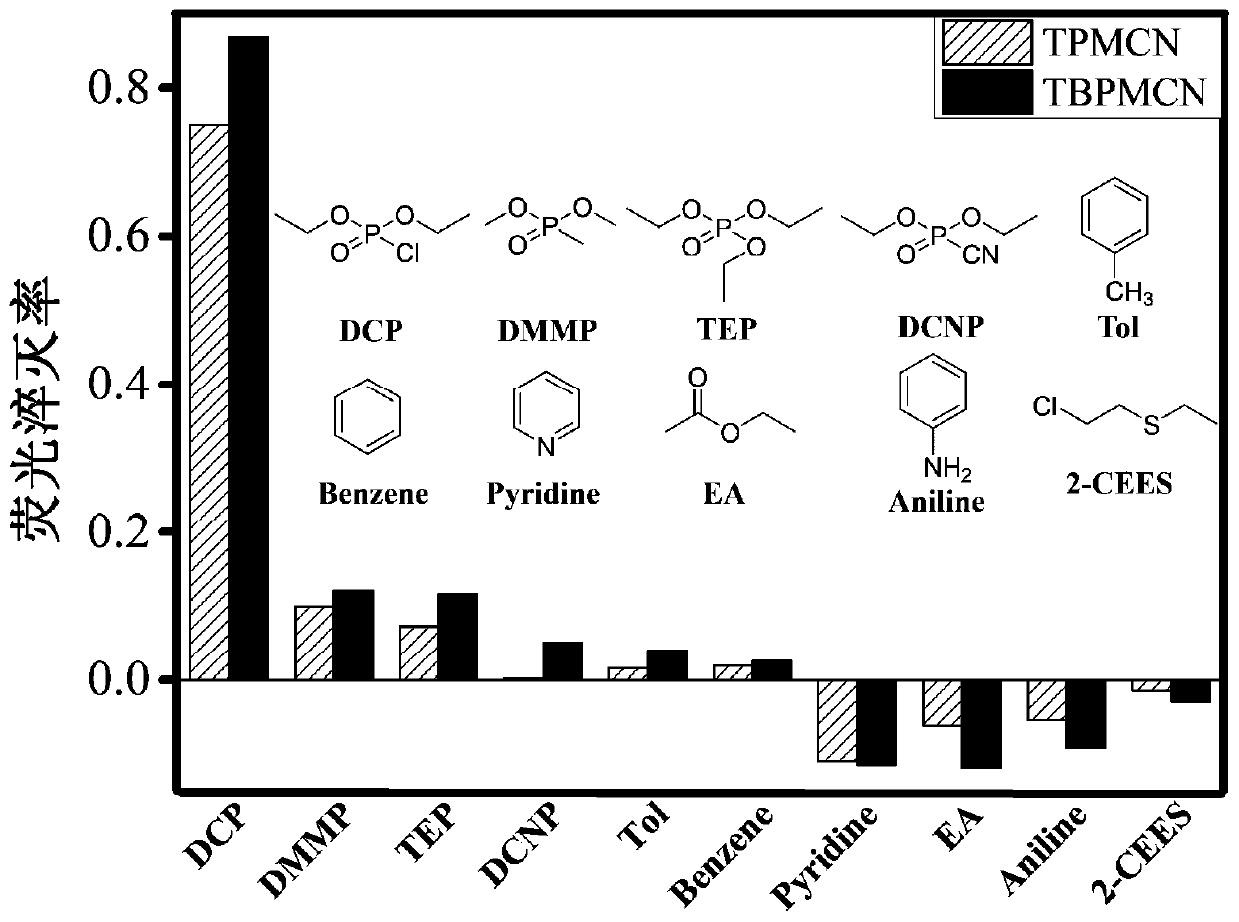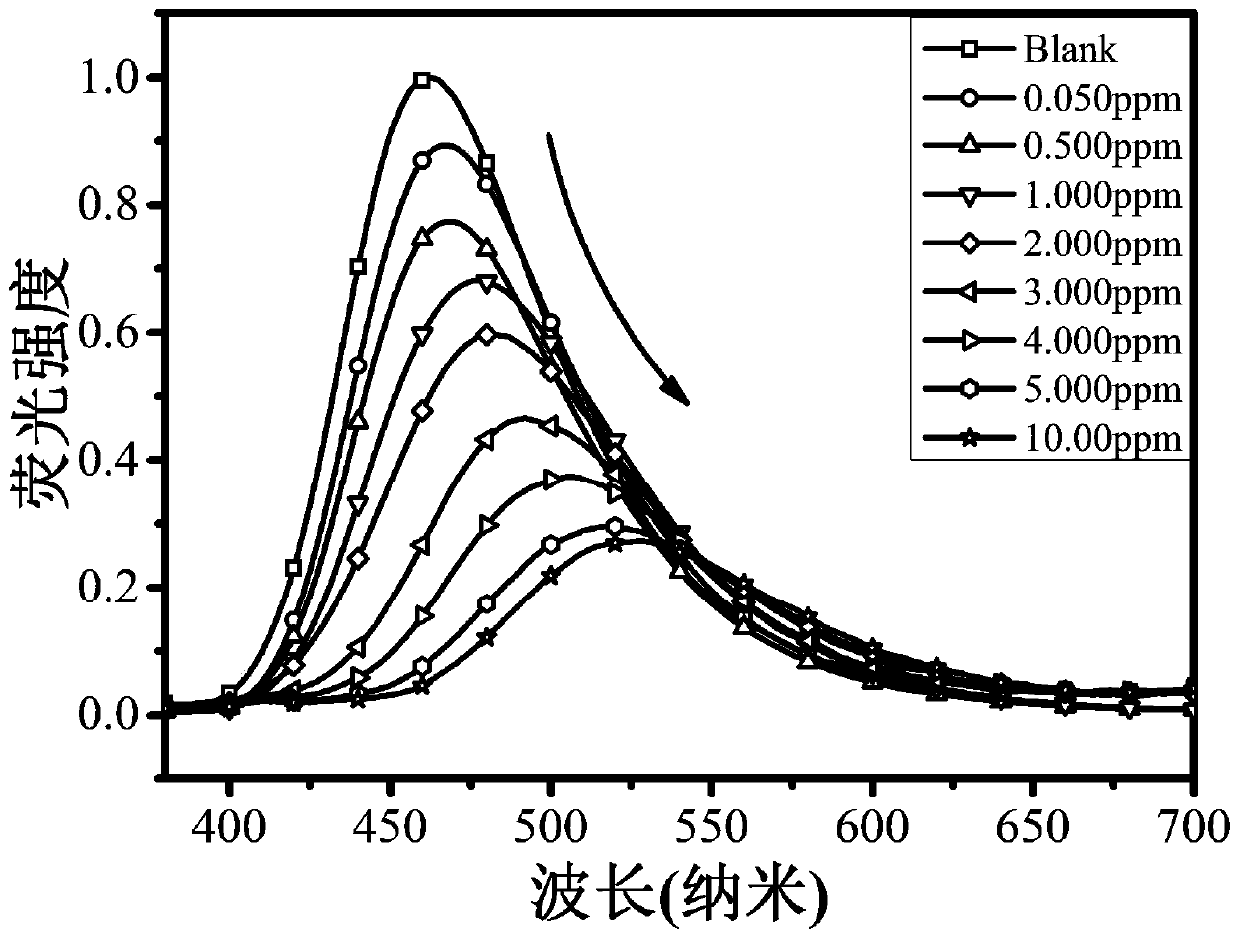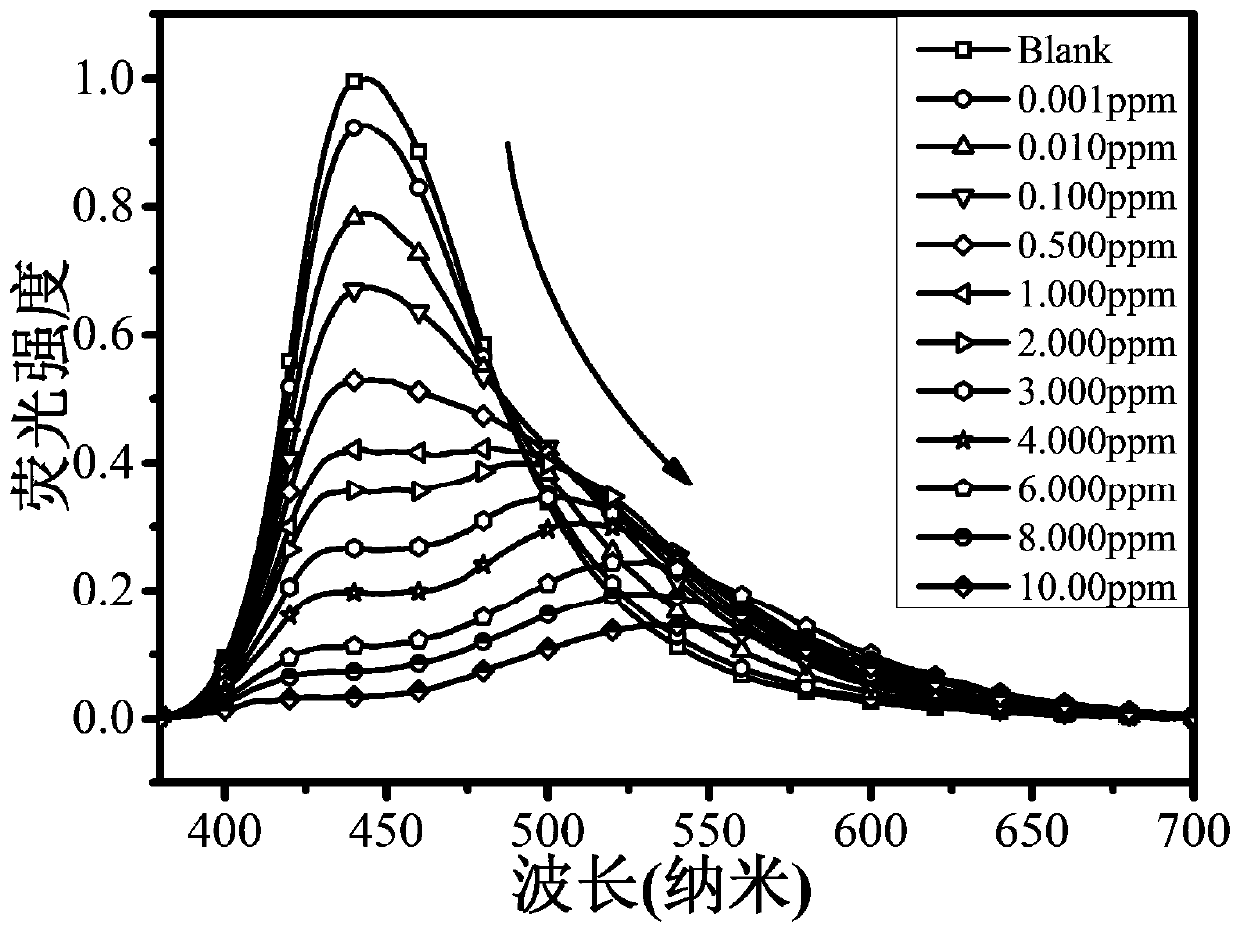Organic fluorescent material, fluorescent film and application of fluorescent film to detection of nerve agents
A fluorescent material and organic technology, applied in the field of fluorescent sensing, can solve the problems of high cost and long detection time, and achieve the effects of short response time, short detection time and good reversible performance
- Summary
- Abstract
- Description
- Claims
- Application Information
AI Technical Summary
Problems solved by technology
Method used
Image
Examples
Embodiment 1
[0041] Synthesis of compound TPMCN and compound TBPMCN:
[0042] 1) Synthesis of compound TPMCN
[0043] Mix 2.0mmol (546mg) 4-(diphenylamino)benzaldehyde, 2.0mmol (410mg) phenanthrenequinone, 8.0mmol (944mg) p-aminobenzonitrile and 10mmol (740mg) ammonium acetate in a 100mL round bottom flask, add 10mL of glacial acetic acid, degassed twice, placed in an oil bath, under N 2 Heated to 120°C under protection and reacted for 2h. After cooling, filter the solid product in the reactor, wash the filter cake with 30 mL of glacial acetic acid and 30 mL of water successively to remove acid-soluble impurities and residual acetic acid, then dissolve the filter cake in 100 mL of chloroform, dry overnight with anhydrous magnesium sulfate, The organic phase was concentrated and purified by thin-layer chromatography to obtain 830 mg (1.47 mmol) of a pure bright yellow product (ie compound TPMCN), with a yield of 74% and a purity of >99%.
[0044] Specifically, the synthetic route is as f...
Embodiment 2
[0061] Preparation of spin-coated thin films:
[0062] The compound TPMCN and the compound TBPMCN are prepared into a TPMCN solution and a TBPMCN solution with a concentration of 0.5 mg / mL respectively, and the solvent is dichloromethane, and a thin film is formed by spin coating with a homogenizer, and the speed of the homogenizer is 1000r / min, and the homogenization time is Finally, vacuum-dry the film for 10 minutes to make TPMCN fluorescent film and TBPMCN fluorescent film. The substrate is made of soda-lime glass. Soda-lime glass needs to be ultrasonicated for 10 minutes with water, ethanol, acetone, toluene and other solvents before use to remove surface impurities. .
Embodiment 3
[0064] Put into the good TPMCN fluorescent film / TBPMCN fluorescent film of spin-coating in cuvette, measure original fluorescent intensity I with fluorescence spectrometer earlier 0 , and then inject a certain concentration of different nerve agent simulants (diethyl chlorophosphate (DCP), diethyl methyl phosphate (DMMP), triethyl phosphate (TEP), diethyl cyanophosphate (DCNP), Toluene (Tol), benzene (Benzene), pyridine (Pyridine), ethyl acetate (EA), aniline (Aniline), 2-chloroethyl ethyl sulfide (2-CEES)), placed in the fluorescence spectrometer after 30s Detect the fluorescence change of TPMCN fluorescent film / TBPMCN fluorescent film (1-I / I 0 ). (I 0 : the initial fluorescence intensity of the fluorescent film; I: the intensity of the fluorescent film after being quenched by the nerve agent simulant vapor).
[0065] Specifically, the test results are as follows figure 1 As shown, it can be seen from the histogram of the fluorescence quenching rate of the TPMCN fluoresce...
PUM
 Login to View More
Login to View More Abstract
Description
Claims
Application Information
 Login to View More
Login to View More - R&D
- Intellectual Property
- Life Sciences
- Materials
- Tech Scout
- Unparalleled Data Quality
- Higher Quality Content
- 60% Fewer Hallucinations
Browse by: Latest US Patents, China's latest patents, Technical Efficacy Thesaurus, Application Domain, Technology Topic, Popular Technical Reports.
© 2025 PatSnap. All rights reserved.Legal|Privacy policy|Modern Slavery Act Transparency Statement|Sitemap|About US| Contact US: help@patsnap.com



